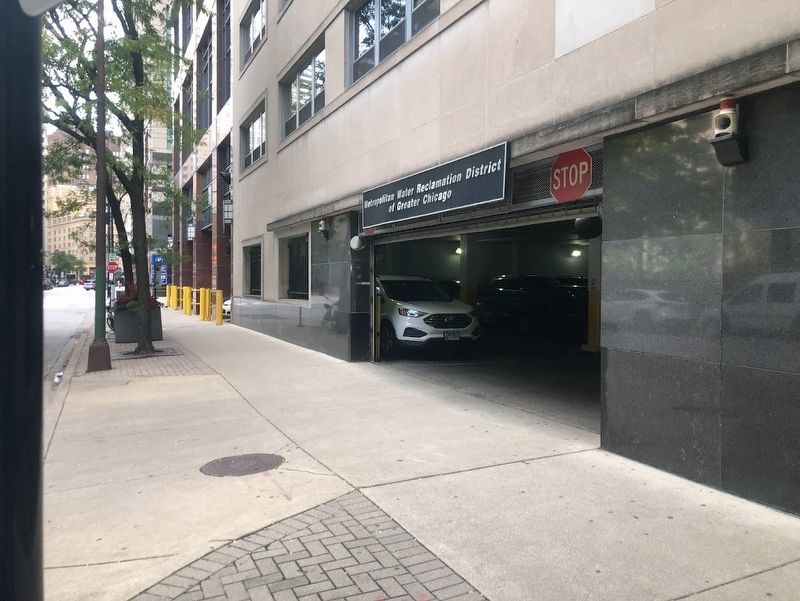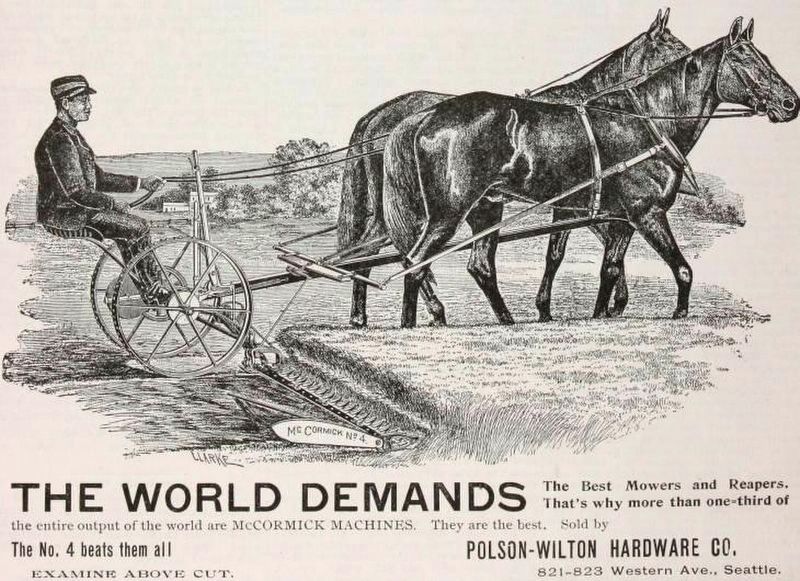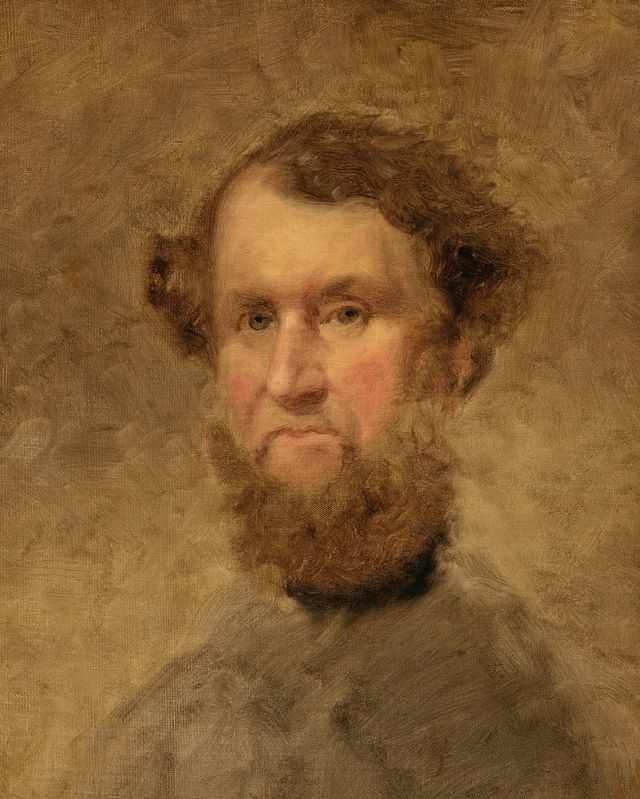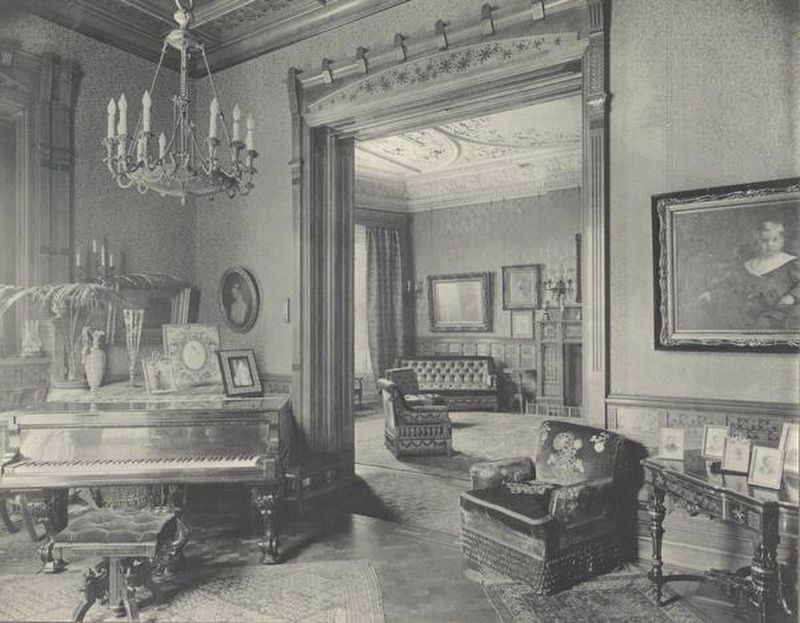Near North Side in Chicago in Cook County, Illinois — The American Midwest (Great Lakes)
Cyrus Hall McCormick
Inventor and Businessman (1809-1884)
— Chicago Tribute —
Cyrus McCormick revolutionized farming. Taking up his father’s interest in agricultural technology, he invented the horse-drawn mechanical reaper in 1831. He was 22. Three years later, he patented it, but he worked another six years to improve it before it first went on sale in 1840.
With his reaper, farmers harvested five times more wheat in a single day than they could with human labor. By 1859, it was estimated that the McCormick reaper contributed $55 million annually to the gross national product.
Because Chicago was the center of transportation for the agricultural West, McCormick built a factory in 1847 on the north bank of the Chicago River. After the 1871 fire, the factory was rebuilt near Blue Island and Western Avenues.
McCormick used his wealth to support a Presbyterian theological seminary and other institutions, and was active in politics.
McCormick died in 1884; his last words were “Work, work, work.” In 1902, his son, Cyrus, oversaw the merger in which his manufacturing firm became the International Harvester Company.
Erected 1999 by City of Chicago.
Topics and series. This historical marker is listed in these topic lists: Agriculture • Industry & Commerce • Settlements & Settlers. In addition, it is included in the Chicago Tribute series list. A significant historical year for this entry is 1809.
Location. 41° 53.676′ N, 87° 37.522′ W. Marker is in Chicago, Illinois, in Cook County. It is in the Near North Side. Marker is on Rush Street south of East Huron Street, on the right when traveling north. The marker is on the sidewalk in front of where the Metropolitan Water Reclamation District of Greater Chicago building meets the back of the 676 North Michigan Avenue building. Touch for map. Marker is at or near this postal address: 675 North Rush Street, Chicago IL 60611, United States of America. Touch for directions.
Other nearby markers. At least 8 other markers are within walking distance of this marker. McCormick Double House (within shouting distance of this marker); John B. Murphy Memorial (about 300 feet away, measured in a direct line); Abraham Lincoln (about 300 feet away); Allerton Hotel (about 400 feet away); William Butler Ogden (about 500 feet away); The Water Tower & Great Chicago Fire (approx. 0.2 miles away); Hotel St. Benedict Flats (approx. 0.2 miles away); Pizzeria Uno (approx. 0.2 miles away). Touch for a list and map of all markers in Chicago.
More about this marker. The marker includes many signs of wear and tear, including sticker residue
and some erosion of the plastic laminate.
While it is not mentioned on this historical marker, Cyrus McCormick's Second Empire-mansion was located on this spot at 675 N. Rush. Built in 1879 after his original home was destroyed in the Great Chicago Fire, this home between Erie and Huron housed three generations of McCormicks before it was sold in the 1940s and torn down in the 1950s. The home of McCormick's brother, Leander, is still standing across the street from the Chicago Tribute marker and is denoted by a Chicago Landmark historical marker for the McCormick Double House.
Regarding Cyrus Hall McCormick. A native of the Blue Ridge region of Virginia, McCormick in 1831 patented a mechanical reaper, called the McCormick reaper, a horse-drawn farm implement to cut small grain crops. The mechanical reaper combined many steps together, enabling farmers to save time and double their crop size. In 1847, McCormick moved to Chicago with his brother Leander to establish a factory for the reaper, attracted to the still nascent city by its access to railroads and waterways connected to the west. McCormick's first reaper factory was not far from this location, along the Chicago River to the east of the Rush Street Bridge. This factory stood until it was destroyed in 1871's Great Chicago Fire. In 1872, McCormick built a new factory south
of the city at Western and Blue Island avenues; it stood until 1962. In 1902, McCormick Harvesting Machine Company merged with three other companies to create International Harvester, one of the world's largest farm machinery companies that went defunct in 1985.
McCormick died in 1884; his widow Nancy, who was about 26 years younger, lived until 1923. Both are buried in Chicago's Graceland Cemetery on the city's north side.
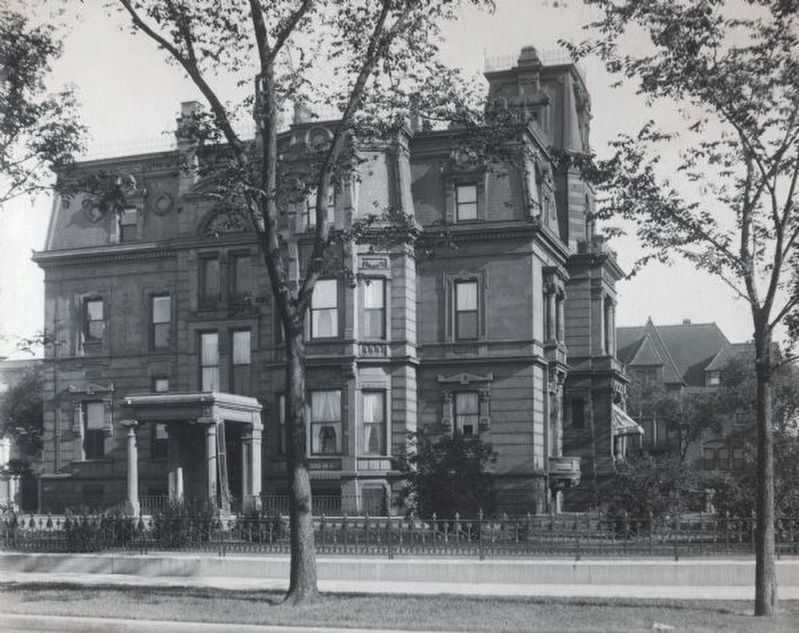
Courtesy of Wisconsin Historical Society
5. 675 North Rush Street
This early 20th century photo shows the McCormick mansion on Rush Street, which Cyrus Hall McCormick built after his original Chicago home was destroyed in the Great Chicago Fire. It was torn down in the 1950s and is now the site of the headquarters for the Metropolitan Water Reclamation District of Greater Chicago.
Credits. This page was last revised on October 23, 2023. It was originally submitted on October 19, 2023, by Sean Flynn of Oak Park, Illinois. This page has been viewed 73 times since then and 28 times this year. Last updated on October 20, 2023, by Sean Flynn of Oak Park, Illinois. Photos: 1, 2, 3, 4, 5, 6. submitted on October 19, 2023, by Sean Flynn of Oak Park, Illinois. • Devry Becker Jones was the editor who published this page.

